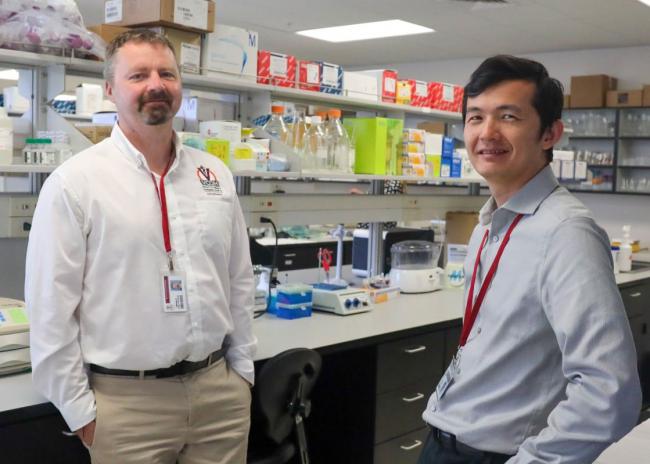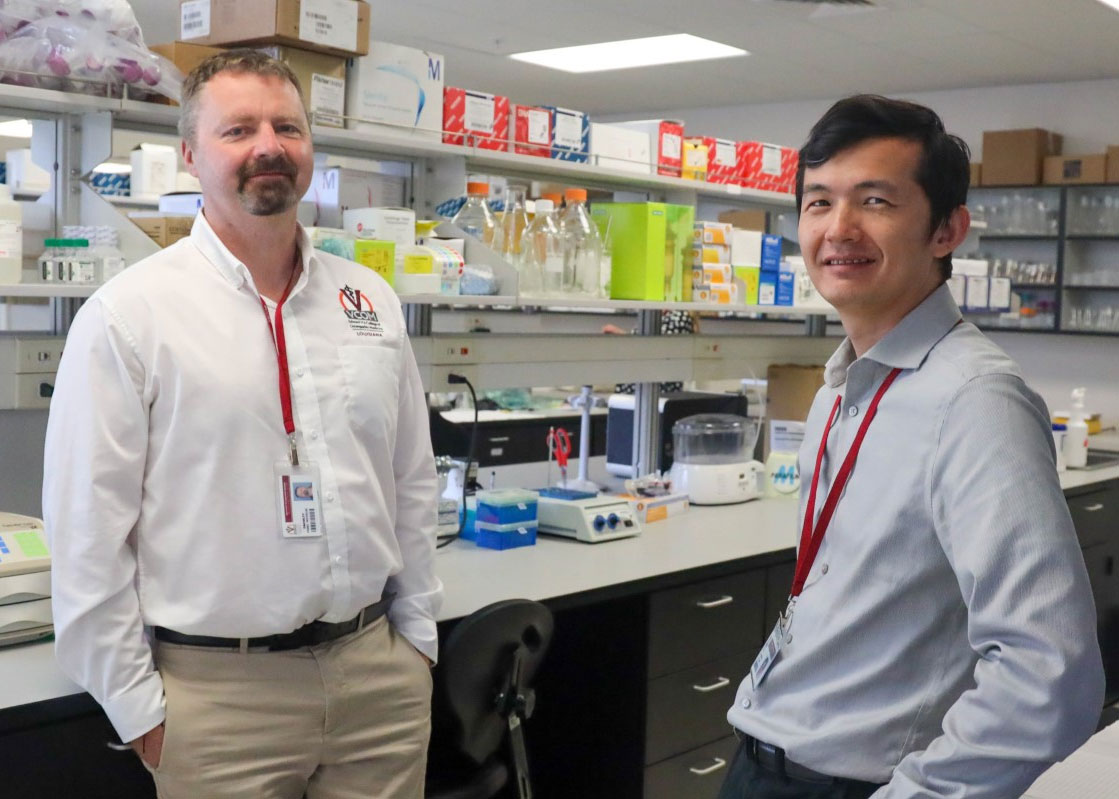
Lin Kang, PhD, and Pawel Michalak, PhD, both from Edward Via College of Osteopathic Medicine’s (VCOM) Louisiana campus in Monroe, LA, recently published their research about the evolution of the SARS-CoV-2 coronavirus in “Cell,” in conjunction with their colleagues from Virginia Tech. SARS-CoV-2 is responsible for the COVID-19 outbreak.
The collaborative VCOM-Virginia research team identified evidence of a recent adaptation in the SARS-CoV-2 genetic sequence that likely precipitated the emergence of the virus from an animal host and enabled human-to-human transmission.
When the team applied highly sensitive bioinformatics tools to more than 182,000 SARS-CoV-2 genomes, results revealed a threonine-to-alanine amino acid substitution in residue 372 within the virus’s Spike protein. This adaptation was found to be unique to SARS-CoV-2 in comparison with the most closely related animal coronaviruses and was centrally located in a “selective sweep” region, where a genomic signature indicates the recent occurrence of strong positive selection. Researchers predicted that the amino acid substitution acted to modify glycosylation and increase binding to human ACE2 (hACE2), the cellular receptor, resulting in increased infectivity and positioning the virus for epidemic potential.
The research team tested this premise by using a reverse genetics system to revert the modified residue to its ancestral state containing threonine and found that receptor binding and virus replication within human lung cells were significantly less effective compared with the prevalent strain containing alanine in this position. This finding confirmed the idea that the mutation allowed for more efficient human-to-human viral transmission and may have been critical to the adaptive evolution of SARS-CoV-2 from an animal reservoir.
“Michalak lab and collaborators show positive selection played a critical role in adaptive evolution of SARS-CoV-2 through substitution in the S protein that increases replication in human cells relative to ancestral variant,” said Stephen DiGiuseppe, PhD, Assistant Professor for Immunology and Microbiology at VCOM-Louisiana. “What is cool is how they used a bioinformatic approach to analyze 187,792 SARS-CoV-2 genome sequences and identified a functional mutation in the Spike protein. This approach may be utilized to provide further insight into how variants of concern arise.”
The new paper has been featured on the popular weekly podcast, “TWiEVO: This Week in Evolution,” and in the Wall Street Journal.
“This is a critical scientific study that establishes the likely genetic changes in the SARS CoV-2 virus that allowed it to jump from animals to humans,” said Harold “Skip” Garner, PhD, Associate Vice Provost for Research Development at VCOM-Virginia. “This establishes an approach for this and potential future pandemic-causing viruses that could allow us to predict detectable changes that could result in the virus becoming more contagious, and open avenues to potentially detect, intercept and mitigate mutating viruses with these changes.”
